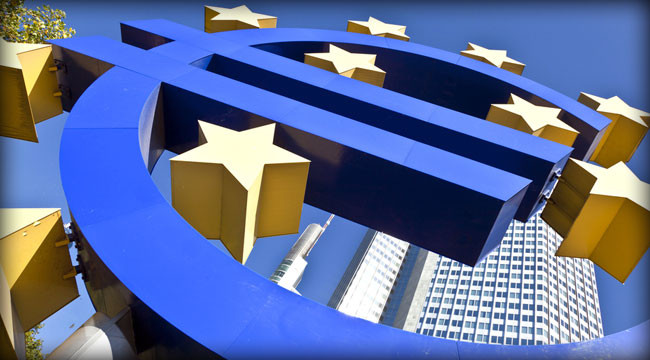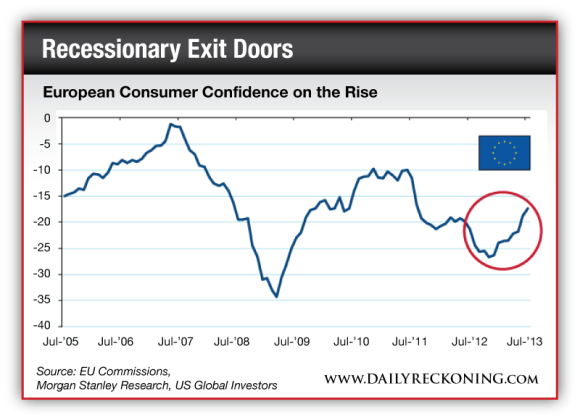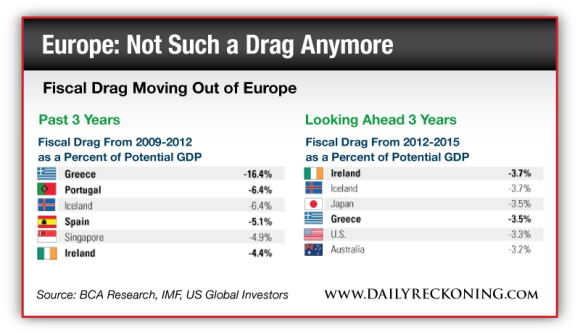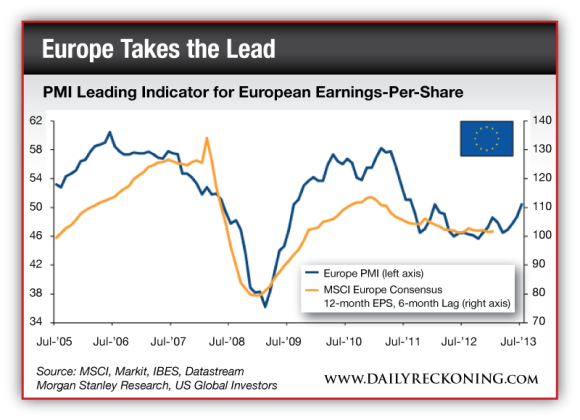Europe Puts on Its Rally Cap
U.S. Global’s portfolio manager Tim Steinle is usually soft-spoken and mild mannered, so our ears perked up when he recently belted out “Europe is rocking!”
After a lengthy period of stagnant growth and lackluster results, the gradual crescendo of improving economic data that have been coming out of Europe lately certainly command attention.
As our resident expert on the European economy, Tim has been listing several economic indicators that were turning positive during the investment team’s morning meetings. While our entire team keeps track of the economic data and political policies of all the developed G-7 and emerging E-7 countries in the world, Tim keeps his finger on the pulse of European countries at all times in his hunt for outsized opportunities for the Emerging Europe Fund (EUROX).
I previously shared how economic releases have been beating expectations, as shown in the eurozone’s spiking Citigroup Economic Surprise Index. GDP is recovering too, with expectations that the year-over-year growth rate will significantly improve over the next year and a half.
Positive surprises and improving economic growth aren’t the only indications that the region’s economy is becoming healthier. Manufacturing appears to be on the mend. The latest reading of the purchasing manager’s index (PMI) was at a two-year high and topped the 50 mark. This indication of expansion hasn’t happened since July 2011. And the PMI in Europe expanded at a faster pace than estimated.
Economic confidence in the region has also been rising. In July, it reached a 15-month high. Generally, when sentiment turns positive, businesses invest more and consumers spend more. We believe this improving confidence will potentially spur positive third-quarter economic growth and help the eurozone to exit its recession.
The area’s fiscal situation isn’t in dire straits it has been. According to BCA Research, structural deficits peaked four years ago. As a result, during the 2009-2012 period, the biggest fiscal drags as a percent of potential GDP were concentrated in Europe, namely in Greece, Portugal, Spain and Ireland, four of the five members of the group formerly known as the PIIGS. Fiscal drag happens when a government’s net fiscal position doesn’t cover the desired net savings of the private economy.
Looking ahead at the 2012-15 period, the largest fiscal drags are expected to be in other areas of the world. Based on data from the European Central Bank, “The government credit impulse is improving, which should help to lift the euro-area economy out of its ‘endless recession,’” says BCA.
It’s no wonder Tim is cheering Europe on, as these economic data points have important implications for global investors.
Consider the area’s PMI, which Morgan Stanley Research found to be a six-month leading indicator of earnings per share (EPS). While the EPS for European stocks has remained relatively flat over recent months, it’s expected to follow PMI and move up.
Here’s another reason to look at the area: Europe has low valuations compared with the rest of the world. Take a look at the normalized price-earnings (P/E) ratio, which is trading at “close to a record valuation low,” according to Morgan Stanley Research. Compared with U.S. stocks and world equities, European stocks are trading at a significant discount.
So as countries including Germany, France and Italy recover, we have solid reasons to believe their eastern counterparts will enjoy a boost as well.
Take the CE3, which are the Czech Republic, Hungary and Poland. These countries are integral to the supply chain in Europe and dependent on domestic demand as well as its export growth.
We aren’t the only ones pounding the table for emerging European countries. Credit Suisse came out with a report recently with a bold headline, “Going Overweight Europe = Bullish CE3.” The report makes a case for the Czech Republic, Hungary and Poland as the countries that have “cheap markets, cheap currencies, which are commodity importers and are not overheating,” says Credit Suisse.
The firm cites numerous positive data, including the CE3s’ lead indicators moving together with Germany, an improving outlook for employment, recovering real retail sales, wage growth and regional credit growth.
Stay tuned for Europe’s much anticipated return to the limelight. But before Europe plays before a sold-out crowd, you might want to get your portfolio a front-row seat.
Regards,
Frank Holmes
for The Daily Reckoning
Ed. Note: As Europe continues its turnaround, readers of The Daily Reckoning email are getting regular opportunities to learn how to profit from it. Sign up for The Daily Reckoning email edition, for free, right now. It’s the only way to get the full story.






Comments: